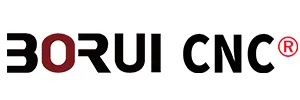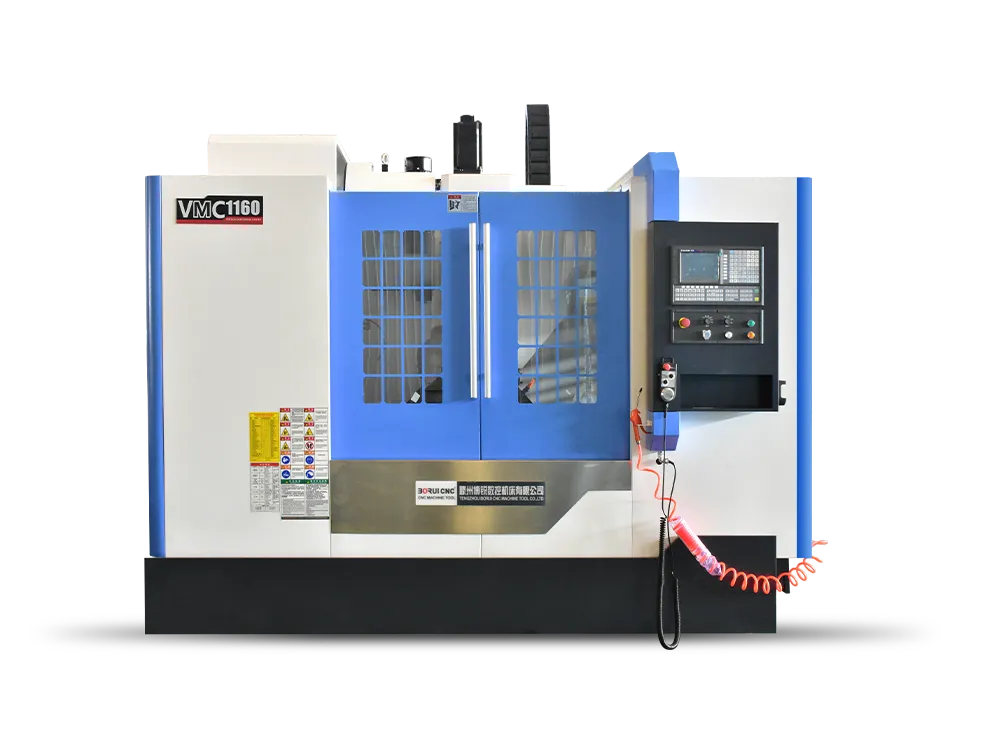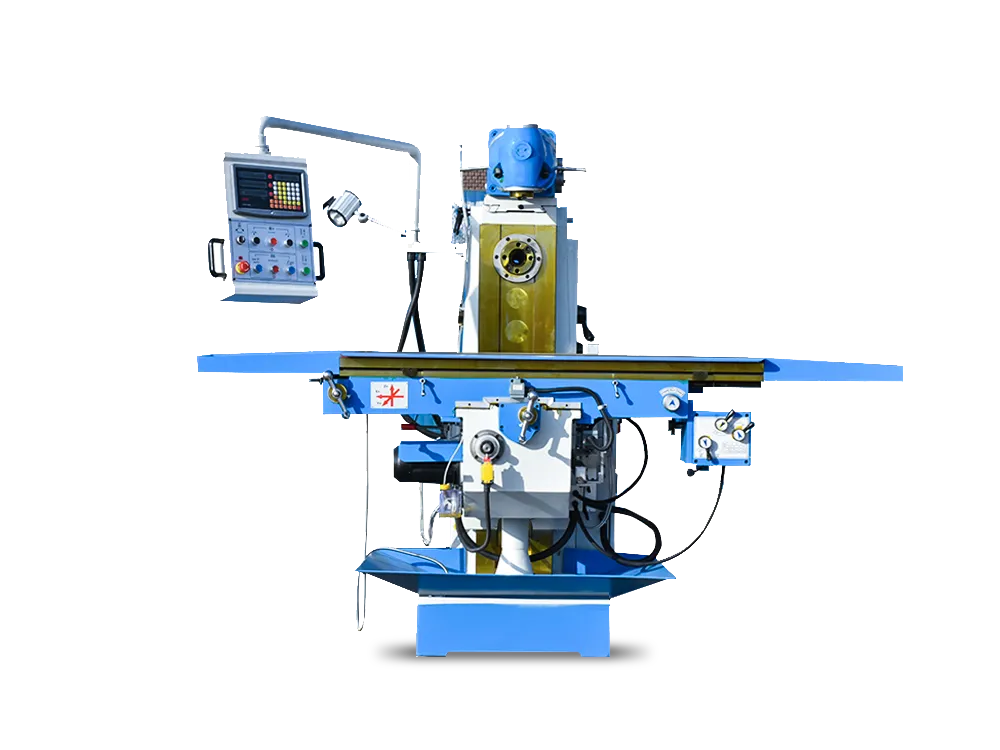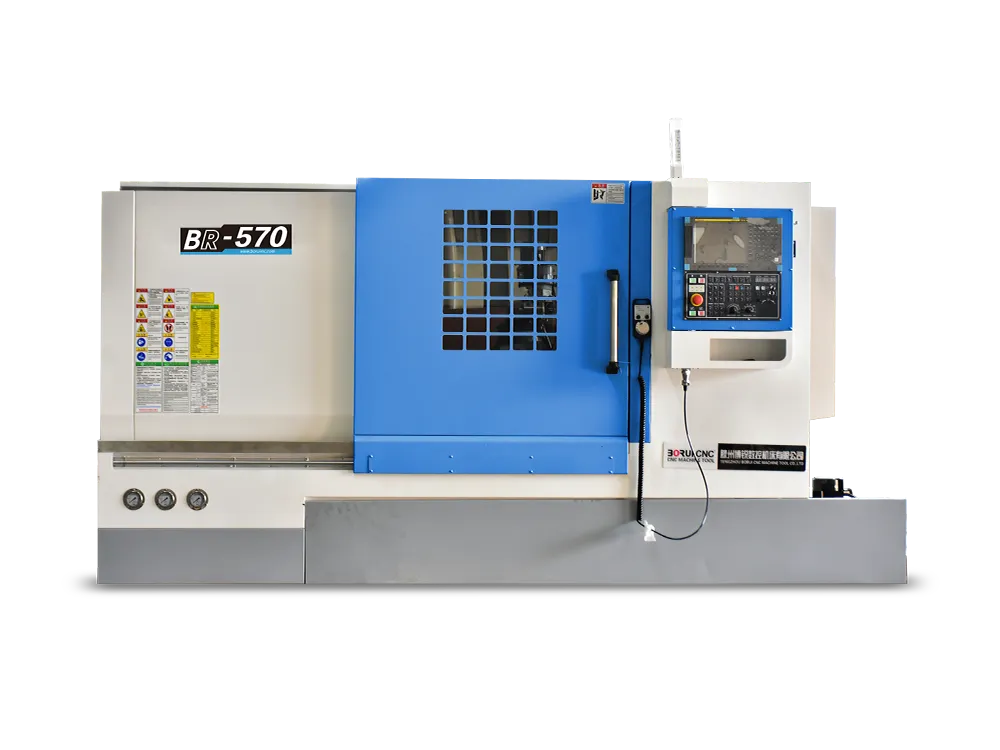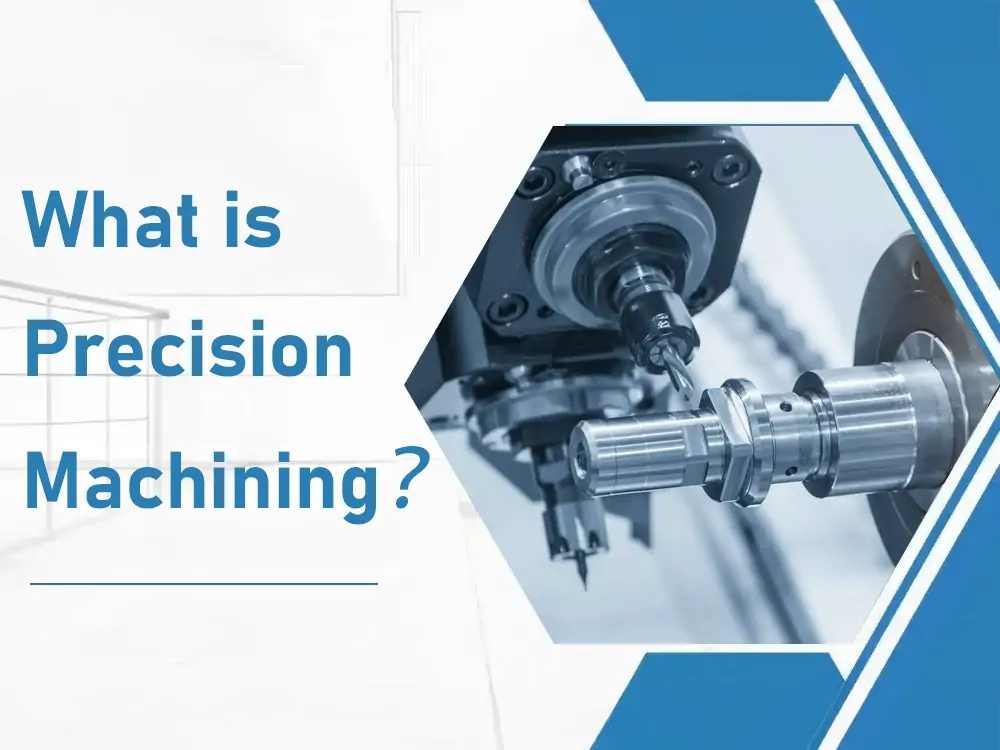
Precision has become paramount for modern manufacturers. From small to large-scale industries, no one compromises on precision. Have you ever thought of the complex geometry designs of different materials? For example, there are intricate designs of vehicle bodies, aircraft, and many more. Noticing perfection in those entities, the first question that comes to mind is: What is precision machining?
It is indeed the heart of modern manufacturing industries. So, knowing this process is crucial for achieving the desired results. Moreover, understanding precision machining highlights its importance in every field. Are you new to this concept? Fret not! In this article, I will explore everything about this process in detail. So let’s get started!
What is Precision Machining?
Precision machining is the procedure of shaping and cutting different materials. This process uses advanced and automated tools and machinery. Some of those tools cut the workpiece, some shape it, and some give it a fine finish. So, it is not a single-step process but involves multiple steps to achieve the desired outcomes.
In the early days, precision machining was a simple process. It used simple and manual machinery and tools, so the products formed were compromised on precision. But with today’s technology, this process has become advanced. Now, it uses automated and computerized control tools. Those tools precisely cut, shape, and finish different materials.
Those materials include plastic, ceramic, and almost all types of metal. This means you can machine various materials to attain different shapes for different purposes. This is why precision machining has become a necessity in many industries. For example, it is used in the aerospace, metal, automobile, marine, and electronic industries.
Steps in the Precision Machining Process
I hope the above section explains the basic idea about precision machining. Right? But as I said above, this is not a single process. So, discussing its steps in detail is crucial for better understanding. In the section below, I will explore the steps involved in this process.
1- Designing a Graphic Model
This is the first step in which engineers prepare a graphic model of the machined part. Firstly, this model is designed as a rough sketch. After that, it is converted into a 3D model using CAD
(Computer-Aided Design) software. This software allows you to inspect the model narrowly. This model has deep details of the part to ensure proper machining.
It contains information about the material’s dimensions, tolerances, and properties. This information minimizes errors and maintains accuracy. Moreover, you can make changes if needed before machining. Therefore, this model’s accuracy decides the final product’s accuracy.
2- Converting CAD to CAM
CAD software just prepares the design model. However, this design model is not feasible for tools to work with. Here, the conversion of CAD to CAM takes place. CAM( Computer-Aided Manufacturing) is software that translates the design model. It converts that graphic model into G-code and M-code, which are readable by tools.
This software provides instructions to the tools to cut the workpiece. HOW? CAM software creates the toolpath. Milling tools follow this toolpath, which ensures precision and minimizes material waste. Moreover, this software also sets the depth of cut, tool speed, and feed rates.
3- CNC Machine Setup
The third step is setting up CNC machines. These machines work with the CAM software instructions, so their manual setup is crucial for better efficiency. In a CNC machine setup, you have to consider some things. For example, ensuring the correct alignment of CNC machines, whether they can move in all X, Y, and Z axes.
Moreover, you have to ensure the proper clamping of the workpiece. Why? A slight movement can affect the whole milling procedure, affecting precision. So, you should also check the appropriate loading of CAM instructions in the machine’s controller system. A dry run is also crucial before engaging the workpiece.
It ensures that all tools are following the given toolpath instructions. Lastly, the selection and setup of proper tools are crucial. For example, if you are drilling the workpiece, you must install drilling tools. Moreover, coolants and lubricants should be provided before running all tools to avoid heat production. Finally, double-check all the setup and make adjustment changes if needed.
4- Performing the Machining
Once all tools and machines are adjusted, the primary machining process starts. Machining imprints the exact model design on the raw workpiece. This process is initiated by running CNC tools. These tools decode the instructions given by CAM software. They follow those instructions and toolpath and start machining the workpiece.
However, machining may involve drilling, grinding, cutting, or milling. CAD software already decides the speed of tools and depth of cuts. However, during machining, it is crucial to monitor the whole process. Advanced CNC tools have sensors that alert you if tools deviate from the instructions.
5- Post-Processing and Finishing
The machining process just cuts or drills the workpiece. So sharp edges are still present on the workpiece. Those edges can be harmful and decrease the aesthetic of the product. Post-processing and finishing take place to remove them. You can perform this process by using several tools and techniques.
For example, hand-filling, tumbling, and abrasives provide delicate surfaces. Another finishing process involves polishing and grinding. Polishing provides a smooth surface and mirror-like look. However, grinding removes sharp edges. Technologies such as electrochemical and heat treatments also give the product a delicate look.
Types of Precision Machining Machines
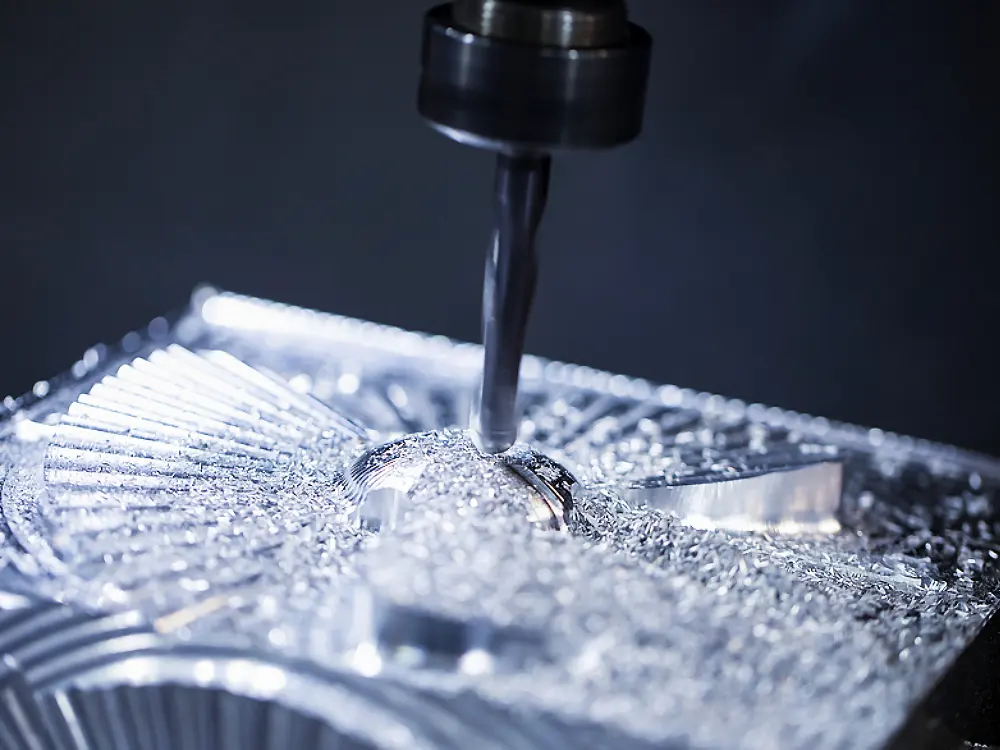
Precision machining is a versatile process that uses various types of machines. Some of those machines have simple designs, while some use advanced technology. Knowing all those machines is crucial before you start precision machining. I will share a detailed overview of all those machines in this section.
1- CNC Milling Machines
CNC milling machines are the most advanced type of precision machining machines. Milling refers to the cutting and shaping of solid materials. So, these machines cut and shape the materials with higher accuracy. How? These machines use several cutting tools that work with computer instructions.
Instructions are provided in the form of CAD and CAM software. CNC milling machines decode these instructions and operate according to them. These advanced tools have multi-axis capabilities. For example, their 3-axis model can cut the material in 3 axes (x,y,z). However, the 5-axis model can shape the material in 5 possible axes.
This is why CNC milling machines are most popular for creating complex geometries. Moreover, CNC milling machines can perform several milling operations. For example, they develop contours, holes, slots, and threads. What I like about these machines is their easy handling of several types of material. For instance, they can efficiently machine plastic, wood, and metals.
2- CNC Turning Machines
These machines also work with computer instructions. However, the shapes created by these machines are primarily cylindrical. They use various tools to cut the rotating workpiece. Let me explain their working principle in detail. First, the workpiece is clamped with a rotating spindle.
All cutting tools are positioned accurately and move with the workpiece. As turning starts, the cutting tools follow the predefined toolpath and remove material from the workpiece. As a result, a cylindrical shape is obtained. However, the speed and shape of the design are pre-decided, so the product has a higher precision level.
You can obtain cylindrical shapes and other shapes, such as conical and helical ones. It depends on the types of turning operations. Those operations involve taper turning, threading, facing, and boring. Turning machines are used in the automotive, medical, oil, and gas industries.
3- CNC Lathes
The working principle of the CNC lathe is the same as that of the machines mentioned earlier. These machines are automated and work with computer instructions. Their earlier model can only perform turning operations and move the tools along three axes. However, with advanced technology, their design and functions have changed.
Now, these machines can perform various operations such as milling, drilling, and tapping. They can move on multiple axes and create complex geometric designs. In these machines, the workpiece is connected to the spindle and rotates. CNC cutting tools operate with computer instructions and remove material from it. The speed and toolpath for tools are predefined and errorless.
4- CNC Drilling Machines
CNC drilling machines are specified for creating holes in the workpiece. These machines also work with CAM and CAD software, creating precise holes. Therefore, they are popular in the automotive and aerospace industries. However, the question arises: how do they make holes? Basically, before drilling, you have to choose a specific drill bit.
These drill bits vary in size and differ for different types of materials. After choosing the drill bit, it is connected to a spindle that moves. The workpiece remains stationary during the whole process. The drilling tools remove the material from the workpiece. As a consequence, a specific-sized hole is formed. However, the size and depth of the hole is already decided.
As technology has advanced, the design of these drilling machines has also changed. Their new model is not confined to creating holes but is capable of boring and tapping. Moreover, cutting-edge CNC drilling machines also have a tool changer system. This system automatically changes the drill bits of different sizes for different holes.
5- Multi-axis CNC Machines
Multi-axis machines are the advanced version of traditional CNC machines. The old design could move the milling tools in only three axes or directions. However, multi-axis CNC machines can move the cutting tools in 4, 5, and 6 axes. So, these machines can create intricate, complex, and precise designs on different materials.
In 4-axis machines, three axes are x,y, and z; the additional axis is the A axis. This axis allows the cutting tools to create cylindrical parts. In 5-axis CNC machines, two additional axes are A and C. These axes will enable the tool to cut the workpiece from five angles. Lastly, 6-axis CNC machines have six different axes. This is the advanced model and is present in robotic systems.
6- Electrical Discharge Machining (EDM)
These machines perform milling operations using electrical sparks. Let me explain their work. The cutting tool that acts as a cathode and workpiece are placed in dielectric fluid, with a small gap between them. When the voltage is applied, an electric spark is produced with a temperature of up to 10,000°C.
Such a high temperature melts the portion of the workpiece being machined. The procedure continues until the desired shape is obtained. You may wonder what the role of dielectric fluid is. This fluid flushes the debris, cools the workpiece, and acts as an insulator when no spark ignition exists.
Several types of EDM machines are specific for different milling operations. For example, the sinker EDM machines create cavities in the workpiece, such as dies. The hole-drilling EDM machines create different-sized holes in the workpiece. EDM machines are commonly used in the medical, aerospace, and metalworking industries.
7- Swiss Machines
Swiss machines are advanced and precise machines for creating delicate designs. They originated in Switzerland to manufacture intricate watch designs. Later, they became popular in making medical equipment and luxury goods. Their working method explains their level of precision. Let us explain how these machines work.
These machines have guide bushing support. This support holds the workpiece during cutting and avoids extra vibrations. The cutting tools are positioned axially and move with the workpiece. In Swiss machining, both the tool and workpiece move together. These machines have multi-axis models, so cutting tools can move in many axes.
So complex geometry designs are possible with these machines. One thing that I like about these machines is their bar-feeding system. This system continuously supplies raw materials during the machining. This means you can produce a large volume of products at one time. These machines can create precise, delicate, and intricate designs quickly.
8- CNC Laser Cutting Machines
As the name suggests, these machines use advanced laser technology for precision machining. These machines use a CNC control system and perform various machining operations. But how does the laser generate and cut the material? Actually, it depends on the laser cutting machine you use to perform machining. Let me explain it.
There are three laser cutting machines, each producing laser differently. The first one is the CO₂ laser cutting machine. This machine creates a laser beam using a mixture of CO₂, helium, nitrogen, and hydrogen gas.
The second type is Fiber laser cutting machines. These machines generate laser beams by passing powerful light through a fiber optic cable.
Lastly, crystal laser cutting machines produce laser beams using synthetic crystal mediums. Those mediums include Neodymium-doped Yttrium Aluminum Garnet(Nd: YAG). This is the reason this type is also called YAG laser-cutting machines. All the laser beams spread everywhere, so the lens directs them.
When this directed laser beam hits the workpiece part, it melts. The melted material vaporizes by itself, creating a specific shape. However, the shape and design are predefined by CAM and CAD software. Therefore, they have excellent precision. Laser-cutting machines are used in the aerospace, electronic, and signage industries.
Advantages of CNC Precision Machining
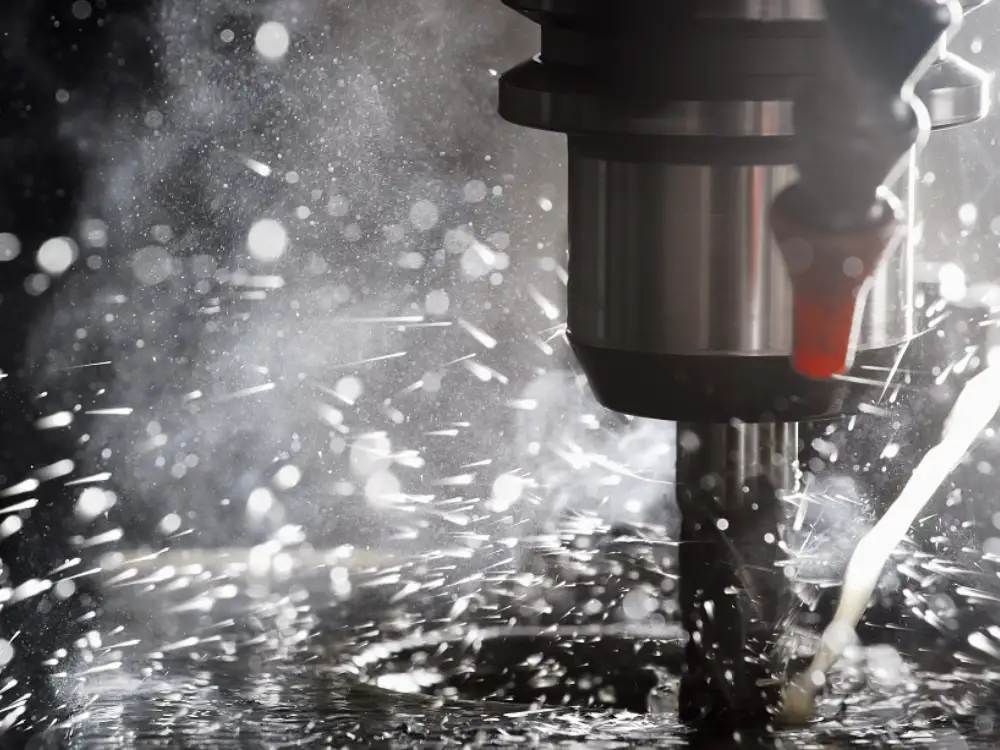
You have an idea about the advancement and application of precision machining. But what makes CNC machining the backbone of high-tech manufacturing? Its advantages answer this question. So, let’s discuss the most common benefits of CNC precision machining below.
1- High Accuracy
As the world is advancing, everyone is behind perfection. A minor flaw is unacceptable in today’s modern era. So, this CNC machining process provides an excellent accuracy level. This process uses machines that work with computer instructions. The CAD and CAM software directs these tools to cut the material. So, the ultimate product is entirely error-free.
Moreover, these machines maintain consistency. To create replicated designs, you just have to provide instructions once. The exact and accurate identical designs are created in no time. So these machines are also time-saving. Lastly, CNC machines have alerting sensors. These sensors alarm you in case of any deviation. So, accuracy is further improved.
2- Tight Tolerance
Before we discuss this advantage, let us explain tolerance. Tolerance is a term used in manufacturing industries to refer to acceptable deviation. In simple words, tolerance denotes how much a product deviates from the perfection level. It is measured in microns or inches. The CNC machine creates products with tight tolerances.
This means these products show minimal deviation from specified measurements. Tight tolerance indicates that products fit precisely and have the correct alignment. The CNC machining process provides ±0.001 inches, which is negligible. This is why CNC machining is used in industries that demand tight tolerances.
3- Cost-Effectiveness in the Long Run
The CNC precision machining process is indeed costly initially. The use of advanced technology justifies its high cost. However, in the long run, it is cost-effective. HOW? As you know, these machines work automatically. So, there is no need for extra staff, which reduces labor costs.
These machines allow repeatability so that you can create multiple copies quickly. As a result,
the production volume increases, and production costs decrease. Moreover, these machines do not work manually, which decreases material waste. Lastly, these machines can perform several milling tasks simultaneously. Hence, the cost of extra tools is reduced.
Applications of CNC Precision Machining
CNC precision machining rules the world with its cutting-edge technology. From small to large, all industries are dependent on CNC precision machines. The reason is undoubtedly their excellent accuracy level. The section below will explore how these machines serve us in different fields.
1- Aerospace Industry
The aerospace industry is one that never compromises on precision. A small mistake leads to serious results. So, the CNC precision machining process provides them with tight tolerance and high accuracy. These machines make the sensitive components of aircraft and spacecraft. Those parts include aircraft engines, landing gears, turbine blades, etc.
2- Automotive Industry
The automotive industry’s primary concern is innovation. They aim to launch intricate and modern vehicle models. Those designs are possible with CNC precise machines. As you know, these machines use customizable tools to obtain various complex designs. CNC machining creates vehicles’ engines, body frames, and cylinder heads.
3- Defense and Military
CNC precise machines play a vital role in the defense and military industry. For example, these machines make firearms, missiles, tanks, and drones. Moreover, a higher level of accuracy is required in defense electronics. So, the CNC machine process helps in radar and guidance systems.
4- Tool and Die Manufacturing
Various tool and die manufacturing industries use CNC machines to achieve accurate results. For example, custom molds used in injection molding require high accuracy for better results. These machines create complex mold designs. Moreover, dies used in milling operations are produced using CNC precise machines.
5- Jewelry and Watchmaking
As you know, jewelry and watches are made of the most complex and intricate designs. Simple machines cannot create such delicate, accurate designs. A slight misalignment in design can diminish the aesthetic of the entire design. CNC machines are used for this purpose. For example, Swiss CNC machines are most commonly used to make watches and jewelry designs.
Frequently Asked Questions
What are precision machine components?
Precision machine components are tools that shape and create different materials. They are made of robust materials to handle various types of workpiece materials. Moreover, they are manufactured with tight tolerances to ensure precise and accurate results.
Why CNC precision machining is better?
In CNC precision machining, the cutting tools operate with computer instructions. Those instructions are provided by using CAD and CAM software. Therefore, the products produced by CNC machining are highly precise.
What is the role of a machinist in precision machining?
In precision machining, machinists perform the following duties
-
Check the tool’s wear and tear
-
Ensure that tools are running properly
-
Make adjustments if needed
Conclusion
Precision machining is the process of creating intricate designs on different materials. In this comprehensive article, I have discussed this procedure in depth. For example, this procedure used various tools. Those tools include CNC machines, lathe machines, swiss, multi-axis machines, etc.
CNC machines use advanced technology. They work with computer instructions and create accurate shapes and designs. The precision machining process is the heart of all industries. It is popular in aerospace, metalworking, automotive, and electronic industries.
